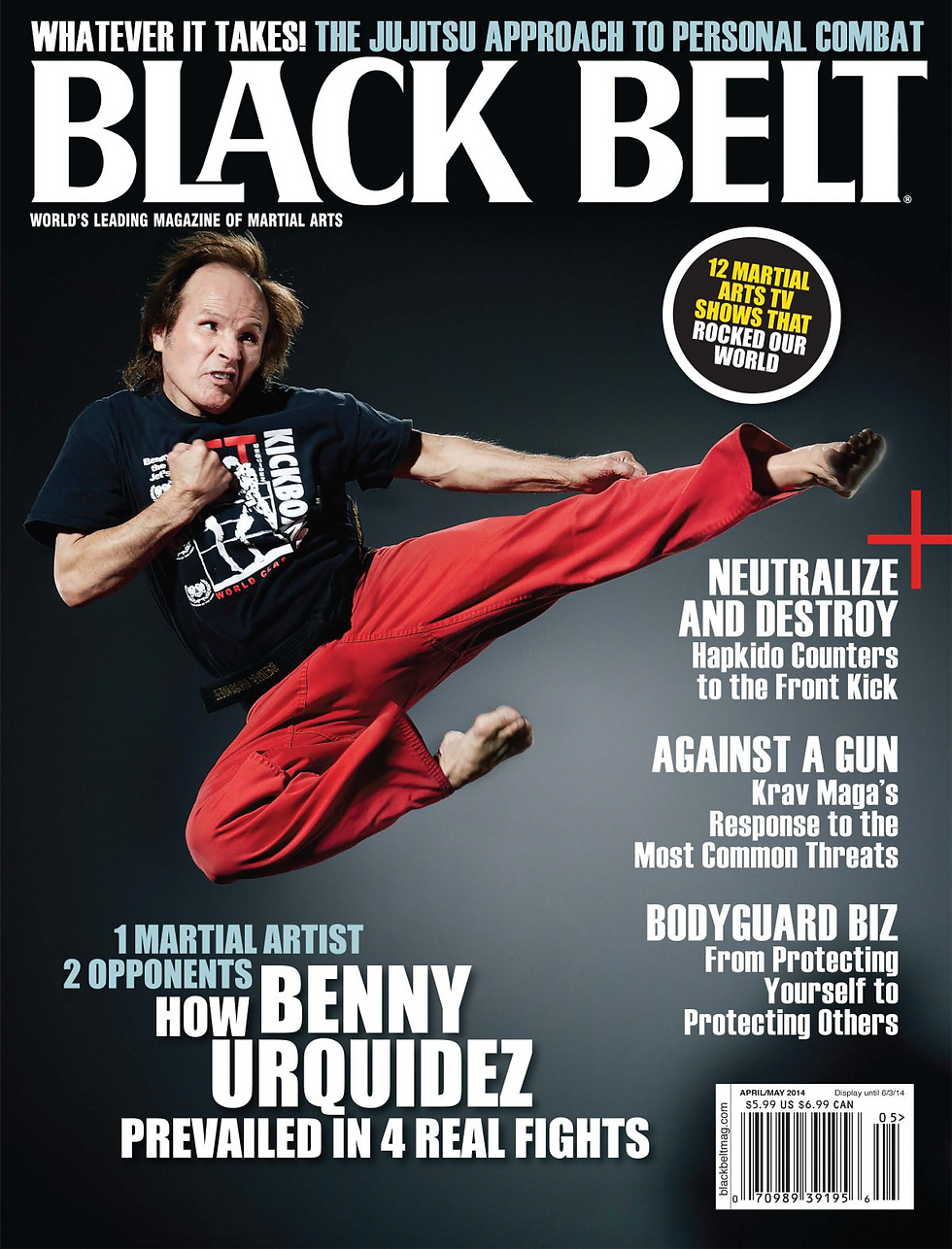- George Chung
- Dec 7, 2023
- 5 min read
Updated: Dec 7, 2023
by Mark Hatmaker

Martial artists often train so they can strike a grappler and grapple with a striker, but the author says this might not be the best strategy.
If you’ve been in the training game for any length of time, you likely have experienced the following or something similar:
You trained hard for the past 90 days, putting in sprint work and producing your fastest 5K ever. Your handy-dandy smartphone app says your VO2 max (maximum oxygen uptake) is shipshape. You go to the river with your buddies and one says, “Race you to the other side!”
You say, “Hell yeah!” and hit the river. You cut the water like Buster Crabbe in Tarzan the Fearless … for the first 50 yards. Then as your lungs begin to gasp for air, a thought hits: Am I gonna die in the middle of this river?
This situation manifests across many domains of physical endeavor. For example, a person with a new personal best with the bench press gets smoked in a push-up contest. Or one with a commitment to 200 push-ups a day gets humbled under a bar bearing said person’s body weight.
In scholarly parlance, a domain is a specific area of study or applied endeavor — in the martial arts, it could be tai chi or muay Thai or any other style. What we focus on as martial artists is, in essence, a domain.
Our skill sets are domain-specific, meaning they don’t necessarily transfer from one domain to another. In the same way we never see a world-champion marathoner set a record in powerlifting, we never see a tai chi master KO the champ at Bangkok’s Lumpinee Stadium.
Crossing domains is also unlikely in matters intellectual. For example, studies show that elite performance in chess does not translate to similar savviness in other intellectual endeavors, no matter the brainy stereotype. This is why we have the rule of specificity, which dictates, broadly, that the largest gains will be in the area of focus with some spillover to contiguous areas.
Awareness of the strictures of specificity is the primary motivation of any athlete or martial artist who engages in cross training.
This mindset is embodied in these two often-heard statements: I can outrun the lifters and outlift the runners.
And, in our chosen endeavor, I choose to strike with the grapplers and grapple with the strikers.
This is not a bad way to tug on the specificity harness, but notice that the
statements themselves are an admission of subpar performance in a given endeavor.
Admitting that we can’t run as well as another person but that we’ve got a better bench press is not too far off the reasoning of a child who says, “So I’m not good at football, but I can do a cartwheel.” Don’t get me wrong! I have great sympathy and empathy for broad-based preparation,
but we must never lose sight of the fact that we’re admitting to a deficit.
Perhaps we can hear it more starkly in these rephrasings:
Sure, I can’t beat you at chess, but grab that PlayStation! Or You’re good at that, but I don’t want to play that anymore — let’s do something I’m good at.
If a single martial art — or possibly one or two other arts — is our target, then training for that specific endeavor while forgoing all else is wise. If general overall exercise performance is our goal and not necessarily an applied focus, then a broad-based approach may be just what the doctor
ordered.
Specificity doesn’t hold just for how we train our bodies to perform; our bodies also adjust to the training itself. Deep down, most of us know this. Here’s an example to wake up this possibly slumbering thought:
Envision running on a treadmill, running on a flat track and running on a trail. It should be obvious that wind resistance, hills and honest-to-goodness rock-strewn traverses can never be replicated by a treadmill no matter the incline setting.
Yes, we can improve our base fitness on the treadmill, but little of that actually translates to utility once we hit the mountains.
Here are two more martial examples: A full-weight tomahawk with a live blade is viscerally real. In no way does wielding it resemble working with a rubber replica.
When it comes to firearms defense, doing a disarm with an unloaded handgun that’s been triple-checked and had its firing pin removed is very different from using a plastic weapon.
This brings up the notion, If we’re training for self-defense in situations that likely will be high stakes, training with low-stakes items is a head-scratcher.
In our martial arts journey, we need to bust our own myths so the battle doesn’t do it for us. It’s all about being an empirical fighter.
To call something “empirically verified” is to say we’ve tested it by observation or experience rather than by theory or pure logic. To be empirical is to select and test for reproducible utility under live conditions.
To be empirical is not merely “making a good case” for something with theory, logic or legend.
Yet still we’re tempted to add tactics and techniques to our toolbox, often for one of these three reasons:
• We say, “I’m a completist. I put everything in my toolbox.”
• We think, “Oh, that move is cool as hell! It’s going in.”
• We argue, “This has survived refutation. It’s in the arsenal now!”
If our eye is on reality, option three is the only correct one. Let’s borrow an idea from Karl Popper, Ph.D., the esteemed philosopher of science. He advised us to do the following:
1. Formulate a conjecture. (It could be a new tactic, technique or strategy.)
2. Start looking for observations that could prove us wrong. (This is key.)
Few of us work in this manner, however. We land on something cool or captivating and add it to our arsenal with no testing — or with false testing.
To false-test is to find all the ways to make an idea right. We see a cooperative but oh-so-flashy demo of a double rolling legbar or a pinchgrip disarm that makes us weak in the knees, and we set out to create perfect conditions for the rare beast to exist. If our eye is on reality or effectiveness, such false testing is not the way to go.
When we adhere to the Popperian logic of refutation, we take each new tool or tactic and begin by attempting to make it fail. We try to find tangible experiments or testing scenarios that would prove the idea false.
If it’s refuted, we save ourselves further time by dropping it from our training and putting our resources into methods that have resisted refutation. We also up our survivability ante by forgoing the dubious or the merely “cool.”
I’ll wager that few of you disagree with what I just presented — we’re all in the high-speed, low-drag, eyes-on-the-target cadre. Unfortunately, as human beings, we are all prone to the false testing of our pet hypotheses. In other words, if we like an idea or are attached to it, we tend to skip
refutation (or make meager stabs at it) and then go the confirmation route.
In general, we seek to confirm ourselves and refute others.
We’re at our best and most efficient, however, when we keep the refutation lens on our own toolbox, our own performance, our own ideas. Ultimately, it will save us training time and, in the case of combat, it might save us considerable pain and suffering.
Mark Hatmaker’s website is extremeselfprotection.com.



























































































